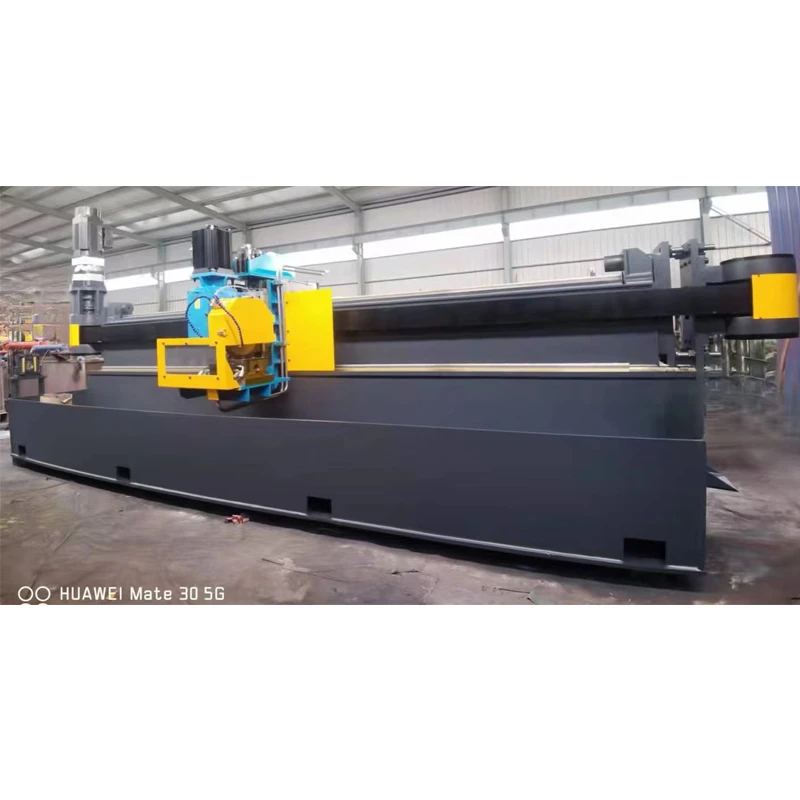Metal Stud Fabrication Equipment for Efficient Construction Solutions
The Evolution and Significance of Metal Stud Making Machines
In the realm of modern construction and manufacturing, metal stud making machines have carved a niche for themselves through their efficiency and precision. These machines play a pivotal role in the creation of metal studs, which are essential components used in the framing of walls, ceilings, and various architectural structures. As the demand for lightweight and durable construction materials rises, understanding the significance, operation, and advancements in metal stud making machines becomes increasingly important.
The Importance of Metal Studs
Metal studs, typically made of galvanized steel, offer numerous advantages over traditional wooden studs. They are resistant to warping, cracking, and shrinking, which ensures that constructions remain stable over time. Additionally, metal studs are non-combustible, contributing to enhanced fire safety in buildings. This makes them a preferred choice, especially in commercial and industrial constructions. The flexibility in design and the ease of installation further solidify their place in contemporary architecture.
How Metal Stud Making Machines Work
Metal stud making machines are designed to automate the production of metal studs, optimizing the manufacturing process for high efficiency and accuracy. The process begins with the feeding of raw metal coils into the machine. As the coils pass through various components, they are cut, shaped, and formed into precise stud profiles according to the specifications required.
The primary stages involved in the operation of a metal stud making machine include
1. Uncoiling The raw metal coil is uncoiled and fed into the machine.
2. Forming The uncoiled metal is formed into the desired shape using roll forming techniques. This process involves passing the metal through a series of rollers that gradually shape it into the stud profile.
3. Cutting Once the metal has been formed, it is cut to the specified lengths. Most advanced machines come with programmable controls that allow for quick adjustments to the length and dimensions of the studs.
metal stud making machine

4. Finishing After cutting, the edges are often smoothed, and any required holes or slots can be punched into the studs for wiring and plumbing.
5. Quality Control Finally, the finished studs undergo rigorous quality checks to ensure they meet the necessary standards for durability and safety.
Advancements in Technology
Recent advancements in metal stud making machines have significantly enhanced their capabilities. Modern machines are equipped with digital controls and automation systems that facilitate higher production rates while minimizing human intervention. This not only increases output but also reduces the likelihood of errors, ultimately resulting in consistent product quality.
Moreover, the integration of Industry 4.0 technologies has allowed for real-time monitoring and analytics. Manufacturers can track production metrics, machine performance, and even detect maintenance needs proactively, leading to reduced downtime and increased efficiency.
Environmental Sustainability
As the construction industry moves towards more sustainable practices, metal studs have gained traction due to their recyclable nature. Metal stud making machines also play a role in this journey. By streamlining the production process and reducing waste, these machines contribute to a more environmentally sustainable manufacturing cycle. The use of recycled materials in the production of new metal studs further minimizes the ecological footprint of the construction industry.
Conclusion
Metal stud making machines are integral to the modern construction landscape. As the demand for high-quality, durable building materials continues to rise, these machines will become even more crucial. Their ability to produce consistent, reliable metal studs efficiently positions them at the forefront of construction technology. With ongoing advancements and a shifting focus towards sustainability, the future for metal stud manufacturing looks promising, paving the way for innovative building solutions in our ever-evolving architectural landscape.
-
High Frequency Straight Seam Welded Pipe Production Line-BzZhou Xinghua Machinery Equipment Manufacturing Co., LTD.|line pipe steel&welded gas pipeNewsJul.30,2025
-
High Frequency Straight Seam Welded Pipe Production Line-BzZhou Xinghua Machinery Equipment Manufacturing Co., LTD.|High Precision&Automated SolutionsNewsJul.30,2025
-
High Frequency Straight Seam Welded Pipe Production Line - BzZhou Xinghua Machinery Equipment Manufacturing Co., Ltd.NewsJul.30,2025
-
High Frequency Straight Seam Welded Pipe Production Line-BzZhou Xinghua Machinery Equipment Manufacturing Co., LTD.|Precision Welding, High EfficiencyNewsJul.30,2025
-
High Frequency Straight Seam Welded Pipe Production Line|BzZhou Xinghua|Precision Welding&EfficiencyNewsJul.30,2025
-
High Frequency Straight Seam Welded Pipe Production Line - BzZhou Xinghua|Precision Engineering&EfficiencyNewsJul.30,2025


